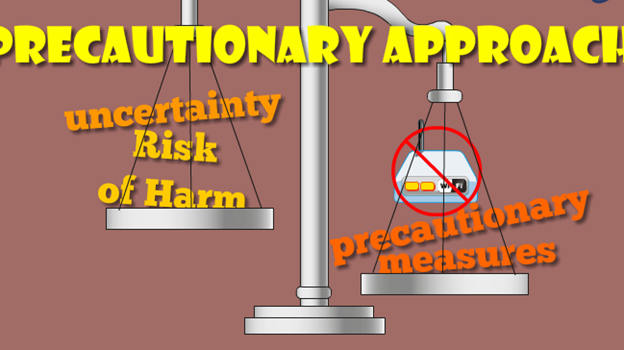The Precautionary Principle in Food Regulation

The precautionary principle refers to specific situations where: there are reasonable grounds for concern that an unacceptable level of risk to health exists. (Article 7 of the General EU Food Law)
One of the extreme challenges facing today’s food policymakers is how to cope with complex risks, such as those associated with food safety hazards. These complex risks are difficult to deal with because they are not precisely calculable in advance and, in addition, there are reasonable grounds for concerns that intolerable level of risk may cause danger to health of consumers. Precautionary principle applies by risk managers (decision-makers) where there is scientific uncertainty about the full extent of possible harms and ‘doing nothing’ may results to high level of risk. While there are some globally recognized risk assessment organizations (such as WHO, JECFA, JMPR, etc.) in globe not all of countries have unified same level understanding and consensus towards food safety hazards and their associated risks. If a country has reasonable grounds of concern that expose to a food product will deliver unacceptable level of risk to health of its consumers it could put temporary ban to use or import of that product. This could be due to scientific research was done on that country. Another approach is argument by that country that data are not sufficiently complete to enable a comprehensive risk assessment to be made for that product.

Therefore, when faced with these explicit conditions, risk managers may take measures based on the precautionary principle, even though seeking more complete scientific and valid data that can be used for calculation of risk.
However, these type of measures have to comply with the principles of non discrimination and proportionality and should be conditional until more comprehensive information in regards to the risk information become available.
World Trade Organization (WTO) stated that “Member countries are encouraged to use international standards, guidelines and recommendations where they exist. When they do, they are unlikely to be challenged legally in a WTO dispute. However, members may use measures which result in higher standards if there is scientific justification. They can also set higher standards based on appropriate assessment of risks so long as the approach is consistent, not arbitrary. And they can to some extent apply the “precautionary principle”, a kind of “safety first” approach to deal with scientific uncertainty. Article 5.7 of the SPS Agreement allows temporary “precautionary” measures.”
There are many cases of precautionary approach in recent years such as ban of GM Food, Ractopamine by EU countries.
The best approach is to resolve this matter is to apply Food Risk Analysis method and use valid scientific information. Figure below presents a schematic representation of the general model developed for the European Commission. There are three major steps to the process envisaged: screening, appraisal, and management. These resemble to the three key steps in conventional risk analysis: hazard characterization, risk assessment and risk management, but withvariations as set out below.

To understanding the relationship between the boxes in this model and the implementation of the ‘precautionary principle’ it is critical to distinguish ‘prevention’ and ‘precautionary appraisal’. The vital prescriptive of the precautionary principle is included in the design of the model as a whole. This provides for consideration at all levels of political debate, science policy and risk management. Consequently, ‘precautionary appraisal’ is a specific approach to regulation, adopted in cases where screening has identified a lack of scientific certainty. The more strict concept of ‘prevention’ applies to the particular approach that is taken when a threat is identified as being both serious and certain.
The member countries can exchange scientific information. But bear in mind as WTO stated that each country member may use measures to achieve higher standards if there is scientific justification.
If you need to understand about the precautionary principle in general or specific to your model and applying Food Risk Analysis, and how to resolve the disputes for precautionary approach please reach out to me at bmarandi@bsdgroup.ca.
Thank you so much to take time to read this summary.
References:
Risk Anal. 2006 Oct;26(5):1259-73. doi: 10.1111/j.1539-6924.2006.00814.x. The precautionary principle and risk assessment in international food safety: how the world trade organization influences standards
European Commission, Communication from the Commission on the Precautionary Principle, COM(2000)1, Brussels, February
E. Fisher, The Legal Dimension of Developing a General Model for Precautionary Risk Regulation, Chapter D in O. Renn et al, (ed), The Application of the Precautionary Principle in the European Union, University of Stuttgart, May 2003; available at: http://www.sussex.ac.uk/spru/environment/precaupripdfs.html
O. Renn et al, (ed), The Application of the Precautionary Principle in the European Union, University of Stuttgart, May 2003; available at: http://www.sussex.ac.uk/spru/environment/precaupripdfs.html
A. Klinke, O. Renn, Precautionary Principle and Discursive Strategies: Classifying and Managing Risks. Journal of Risk Research, Vol. 4, No. 2, O. 2001, 159-174.

